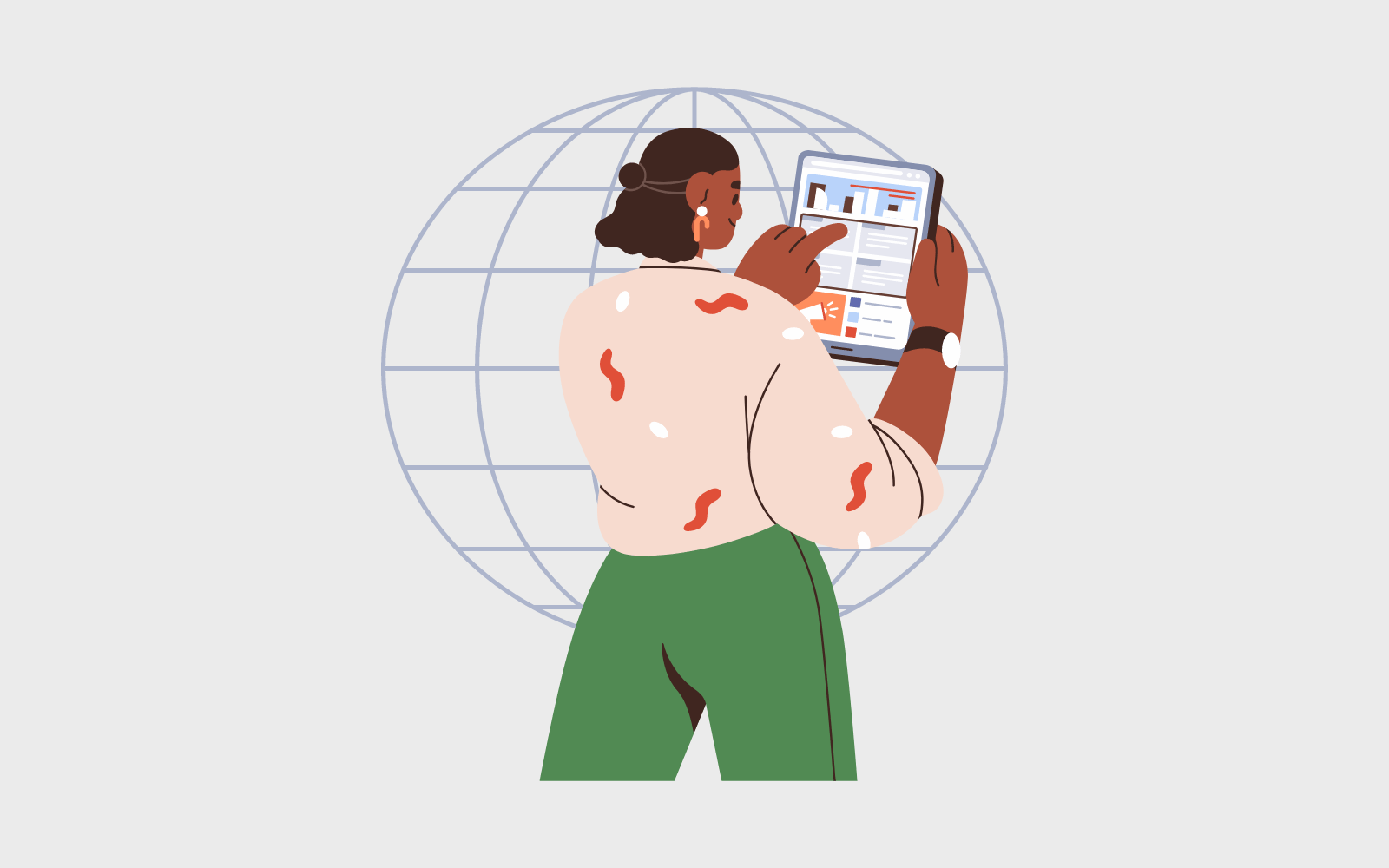
W ant to learn how to write a feature article?
You’re in the right place because below, you’re going to learn step-by-step how to write a feature article. Plus, everything else you’ll need to publish the best story possible, including:
- How to choose an engaging topic and angle
- Tips on balancing storytelling techniques with cold-hard data
- Common mistakes to avoid
- Different types of feature articles with examples for inspiration
- Formatting advice
- And more!
So, let’s get after it.
In This Guide:
- Step 1: Choose an Engaging Topic
- Step 2: Deep Dive into Your Research
- Step 3: Nail Down Your Angle
- Step 4: Plan out the Structure with a Detailed Outline
- Step 5: Craft a Strong Headline and Opening
- Step 6: Write Your Content To Balance Storytelling With Cold-Hard Facts
- Step 7: Tie It All Together with a Succinct Conclusion
- Step 8: Add in Visuals and Media
- Step 9: Edit Carefully
- Common Mistakes to Avoid When Writing a Feature Article
- Different Types of Features Articles (With Examples)
What is a Feature Article?
A feature article (or feature story) is an in-depth piece of ‘journalism’ intended to engage readers with a compelling story.
It’s meant to inform and entertain (or at least engage) readers on a topic, person, or news event.
Unlike a standard news report, it combines detailed information, data, and factual reporting with creative literary techniques, such as a narrative structure and personal observations, to hook readers.
That’s why feature articles typically center around some human interest—it has emotional appeal and allows readers to empathize with the subject.
One way to think of a feature article is to treat it like a documentary.
Thanks to your research, interviews, surveys, storytelling, and sensory details (or descriptive text, in this case), you grant readers a comprehensive look at a topic.
But let’s quickly compare feature articles with editorial articles just so we’re all on the same page.
Feature Articles vs Editorial Articles
| Aspect | Feature Article | Editorial Article |
| Purpose | The goal is to inform, entertain, or provide in-depth info on a niche topic. | Editorial articles express the opinion of the blog’s author or team on a specific niche topic. |
| Content | Includes detailed reporting, interviews, and storytelling elements on a topic – often centered around a human interest. This could be on a recent topic or an evergreen one – as long as it’s likely to engage the target audience. | Primarily intended to present arguments and the blog’s ‘official’ viewpoint on a particular topic or issue. Often in response to a current event or trending, polarizing topic. |
| Style | Often creative and narrative-driven to encapsulate a topic. Although the author’s opinions may be sprinkled in, the meat is largely objective, resulting from extensive research. | Editorials are typically quite formal and maybe even polarizing. They focus on the opinions of the author and the group they may be representing. While there may be supporting data to back up opinions, they’re relatively subjective. |
| Objectivity | Strive for balanced reporting, though they may have a particular angle. | Inherently subjective, presenting a clear stance on an issue. |
| Length and Depth | Typically longer and more in-depth, giving room to share human storytelling aspects and explore topics in detail. | Usually shorter and more focused on making a specific point or opinion. |
| Authorship | Often written by a blog writing team, feature writers, or guest freelance writers. | Typically signed, representing the personal view of the author. |
| Placement | Can appear anywhere on your blog. | Usually found in a specific section dedicated to opinion pieces – for example, a section on the homepage called Editor’s Picks. |
How to Write an Engaging Feature Article
The actual process of feature writing is a bit nuanced.
Not because you have to follow any clear, hard structure necessarily.
But because it’s meant to engage AND inform – so, it requires careful planning and execution.
Let’s walk through the basics you’ll want to focus on.
Step 1: Choose an Engaging Topic
The key foundation of any feature article is a compelling and engaging topic.
Since this blog is for bloggers, your feature article will likely depend on your blog’s niche.
But this is actually lucky and advantageous, as you’ll have some direction and constraints for what topics to brainstorm.
As always with feature articles, though, you’ll want to look for human-interest stories that can evoke both curiosity and emotion from your target audience.
So, one place to start your brainstorming is to look at what’s trending in your niche.
Then, as you list possible topics, expand out into timeless, evergreen topics. As you do this, you’ll want to also explore unique angles on the article ideas you come up with. This way, you can offer new insights or information.
But as you’ll soon see, I generally recommend doing this after you’ve done thorough research.
Step 2: Deep Dive into Your Research
All feature stories aim to provide a unique and/or surprising in-depth look at the topic.

This means you must go beyond a typical, short-form news article and deliver a truly comprehensive view – complete with unique anecdotes and fresh perspectives backed by data.
This requires thorough research into the subject matter, which is best done by first understanding the broader general topic (laying a strong foundation like roots) and then gradually adding a trunk and branches of more granular details as you narrow your focus.

Definitely check out Wait But Why for great examples of feature articles.
This process may include:
- Interviewing topic experts or those with first-hand experience of the topic for direct quotes.
- Conducting in-depth research with public data to synthesize and uncover new insights.
- Setting up Google Alerts or social listening tools like Hootsuite (if it’s a new, trending topic)
But regardless of whether you’re relying on original or new information – you want to ensure you know the ins and outs of your story before you start writing.
This will also help you brainstorm various angles and determine the best one to focus on with your story.
Step 3: Nail Down Your Angle
I was originally going to combine this point with choosing your topic. However, I do believe the angle can evolve with the research.
So, as I mentioned, I’d recommend leaving this until after the research.
Of course, you’ll naturally have an immediate reaction and opinion to a topic. However, your research will help provide the context and nuance necessary to take your opinion to the next level.
Some general examples of angles that can appeal to a range of people include:
- Surprising connections
- Behind the scenes
- Untold stories
- A personal transformation
- And lots more you’ll see below in our list of types of feature articles.

You’ll also want to consider these tips to help you choose the best angle possible for your story:
- Universal themes so you can leverage aspects of the human condition that are relatable to all types of people, such as grief, family, and greed.
- Gauge what others are saying about the topic. Along with your standard research, check what people say on niche subreddits, Facebook Groups, video comments, and more.
- Consider the topic’s timeliness and whether the story could have wider implications and connections.
- Choose an angle that can answer as many questions people may have about the topic as possible. (Just as you would with any blog article you’re trying to rank on Google!)
- And can include as much relevant data as possible to help flesh out the story.
Step 4: Plan out the Structure with a Detailed Outline
A true feature article uses careful planning and even copywriting techniques to hook readers and share unique insights into a story.
This lends itself well to experimentation.
There is no rigid article structure to follow (not even the diamond structure that some recommend). So long as you have a logical flow of information, you can tackle the story whichever you see fit.
However, crafting a detailed outline will help you organize your thoughts and notes to create a cohesive piece of writing.
To help you get started, you can write a list of questions and follow-up questions you think readers may have. This way, you can be sure you satisfy readers’ curiosity and keep them engaged.
With these questions and answers listed in front of you, you can decide how to hook readers from the start. How the middle should be structured. And how to wrap up the story for a satisfying conclusion.
Step 5: Craft a Strong Headline and Opening
You may choose to work on your opening at the start to help guide you through the rest of the article. Or you may want to leave it to the end once you’ve got the story mostly laid out in front of you.
This will really depend on your unique preferences.
Regardless, your headline should be catchy and spark curiosity or emotional appeal (check out our headline templates and a list of power words to help).
Your opening section of the story should then continue this, setting the tone for your writing style. But just don’t take too long to get to the meat of the story.
So, I’d recommend trying out a few different options and testing them at least on friends and family to see which resonates strongest.
Step 6: Write Your Content To Balance Storytelling With Cold-Hard Facts
Again, your writing style in a feature article should be a mix of engaging storytelling and factual reporting.

Active voice is the most engaging for readers.
As is a semi-formal language that blends authoritative knowledge on a topic with a relatively broad appeal. You can also throw in some jargon here and there that you’re sure your target audience will understand. (But see the common mistakes section below to not overdo it!)
There’s an example used in the 2019 Norton Field Guide to Reading regarding language tips. It shares an example in a feature article where the author uses the Norwegian expression Uff-da – like wow or omg.

I just want to mention this because it’s an example of something subtle you can do to highlight local knowledge and build common ground with readers. So consider what sorts of language your target reader uses.
You should also use descriptive language and personal anecdotes to help the reader visualize your story.
This way, you can blend narrative elements with important information for your non-fiction piece.
But just make sure you balance and weave such writing techniques with your stats and expert opinions.
Step 7: Tie It All Together with a Succinct Conclusion
Your conclusion is your last chance to create a powerful impact with a complete story for readers.
You won’t introduce any new information but tie all the previous information into a satisfying whole.
A good ending of a feature article should bring closure to your angle of the story while also leaving room for discussion or even inspiring action.
You can do this in many ways. You can refer back to the story’s beginning hook, synthesize what’s been shared and hopefully learned in the story, or pose a thought-provoking question or call to action.
Whatever it takes to leave a lasting impression.
Step 8: Add in Visuals and Media
As always, visuals and multimedia are welcome breaks in long pieces of text.
They are extremely helpful tools for boosting reader engagement and understanding.
And you can do this while you write.
You can choose images complementary and relevant to the story, such as infographics or portraits of the story’s characters.
Plus, other multimedia, like audio clips and videos, and even simple formatting tricks like pull quotes to highlight key points and enhance the story.

Just make sure to credit properly if you are borrowing from others.
Step 9: Edit Carefully
Editing is the crucial final step before publishing.
How you start depends on you, but double- and even triple-checking the facts is crucial to any news story.
In terms of the actual writing, you’ll want to start by checking for grammatical and spelling errors while also assessing sentence structure and punctuation.
Free tools like Grammarly and Hemingwayapp are excellent for this.
But you’ll also want to go even further by reading the text out loud to help you catch awkward phrasing and transitions and ensure you maintain a consistent tone and style throughout.
Always ensure you have a clear, logical structure – and, if necessary, cut out fluff or unnecessary information. The goal is a tight and engaging story by any means necessary.
Common Mistakes to Avoid When Writing a Feature Article
Here are some of the most common mistakes that hold back feature articles from reaching their goals.
Unsupported Claims and Shallow Research
The longevity and success of a feature article typically depend on the real-world story you’re telling.
You need to put in the time to research all the ins and outs of a story to back up your thoughts and claims with evidence. It supports your credibility and even helps your writing.
It’s also important to note that you should be sure not to rely too much on quotes! You’re giving your authoritative analysis, not publishing a transcription. So, try to find a sweet spot.
Unorganized structure
Above, we discussed the importance of nailing your structure. A logical flow is crucial to sharing a good piece of nonfiction storytelling.
Without it, you’ll likely repeat yourself throughout the story with redundancies. And lack any clear arc to guide readers.
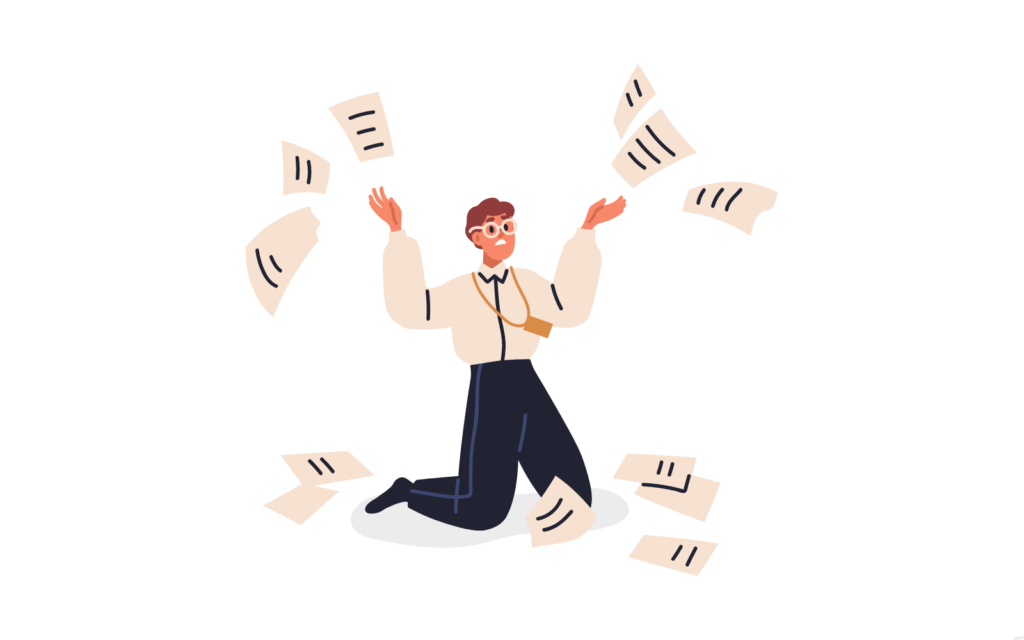
Audience Mismatch
You’ll want to prioritize your content and style for your intended readers. So, it’s key to grasp not only the story you’re writing about but also your target audience.
This way, you can also avoid using too many technical terms and jargon that can alienate and confuse readers and prevent them from following along.
Boring Angle
Again, the entire step above is specifically focused on choosing your angle. If you choose a boring or cliche angle, your story will be lost in the void.
Your goal is to find a unique perspective—one that your target readers haven’t heard before and will, therefore, want to read.
Weak Intro and Conclusion
With the intro, you want to hook readers ASAP. So it’s helpful to avoid too much preamble and descriptive setup and jump right into the meat of the story.
Similarly, you’ll want your conclusions to be as impactful as possible. So, be sure to provide some sense of closure to the story you told. You will, however, ideally want to leave readers with something to think about as well.
Different Types of Features Articles (With Examples)
Bloggers can publish many different types of feature stories on their sites.
So, to help you get inspired, here’s a list of feature article types you can consider. Plus, examples of each:
In-Depth Profile Articles
This type of article explores a particular subject’s life, work (or even personality profile) to give readers a personal connection and understanding of a person.
One example that I highly recommend checking out is the Elon Musk blog series published on Wait But Why.
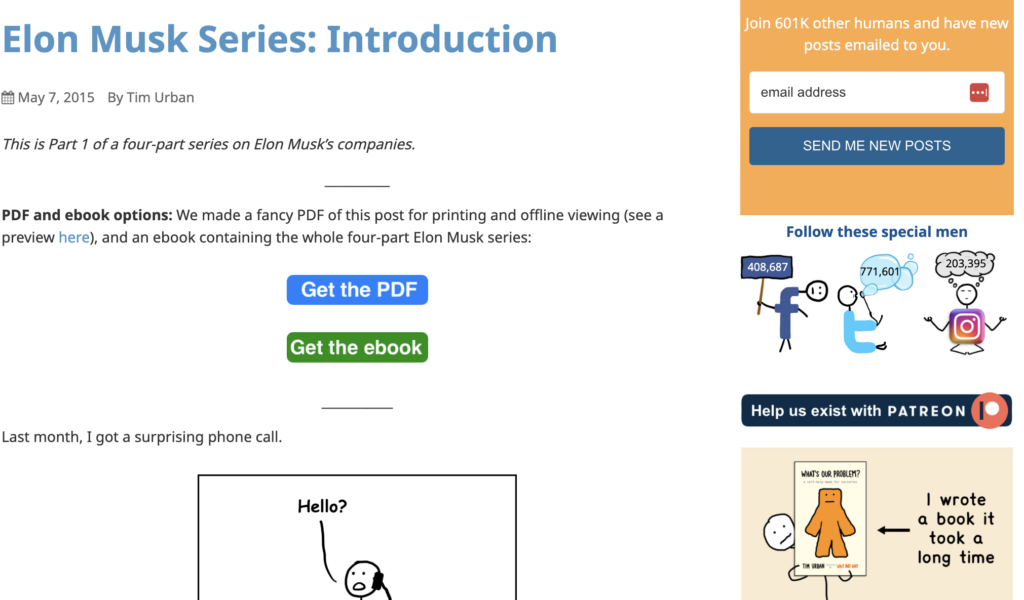
It was written well before Elon became a political figure and focuses on him and his various businesses. The stories go well beyond the present by examining the histories of various industries and even our solar system.
The portion on Tesla discusses the history of the car and oil industries, while the section on SpaceX even describes the details of the different planets in our solar system.
This is just what I can remember from reading it several years ago. But because of this lasting impact, it’s partly a great example.
Human Interest Stories
This feature explores an event’s personal and emotional significance through a person’s experience (for example).
These are very common stories that you can find in a publication like The New Yorker – blending a narrative with long-form journalism.
Esquire is another publication that does this type of feature article well.
A perfect example of one of these types of articles is The Falling Man.
It examines the impact of 9/11, contextualized through the image of a man falling from the World Trade Center.
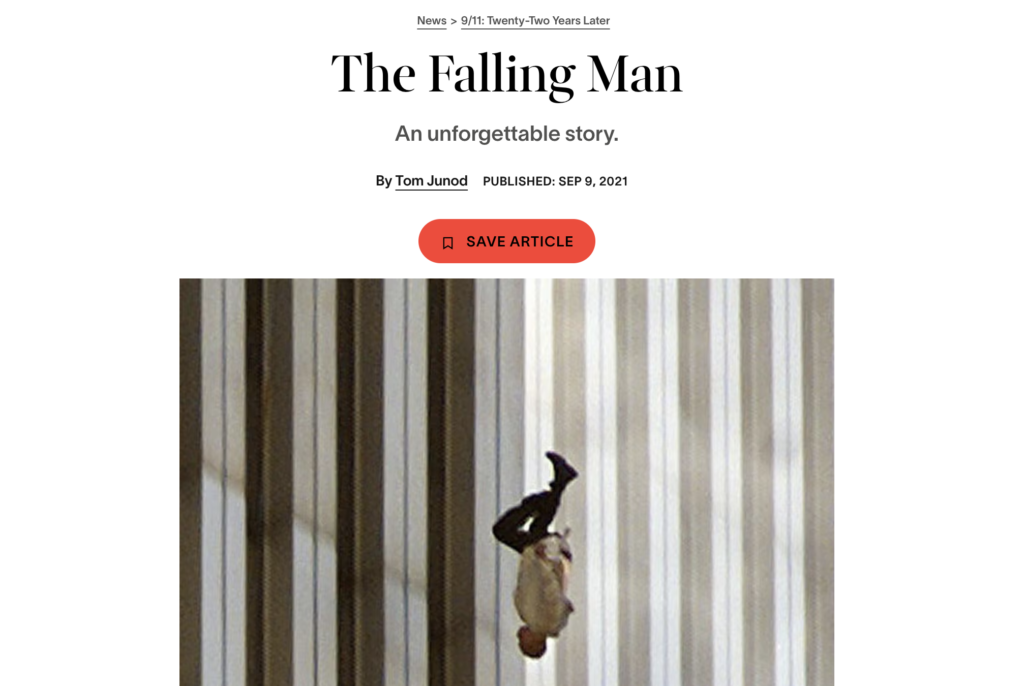
It’s both a personal story of a 9/11 victim and the collective trauma of what a society feels after an attack.
It also shares commentary on how such moments are captured and represented in the media and pushes readers to reflect on loss, tragedy, and the human experience.
Granted, this is an extreme example, but surely there are historical or trending events in your niche that could be contextualized via a human approach.
Unexpected Connections
This effectively contextualizes a trending, perhaps confusing topic with an analogy to something better known to a wider audience.
An example of this type of feature article would be Ted Chiang’s analysis of ChatGPT.
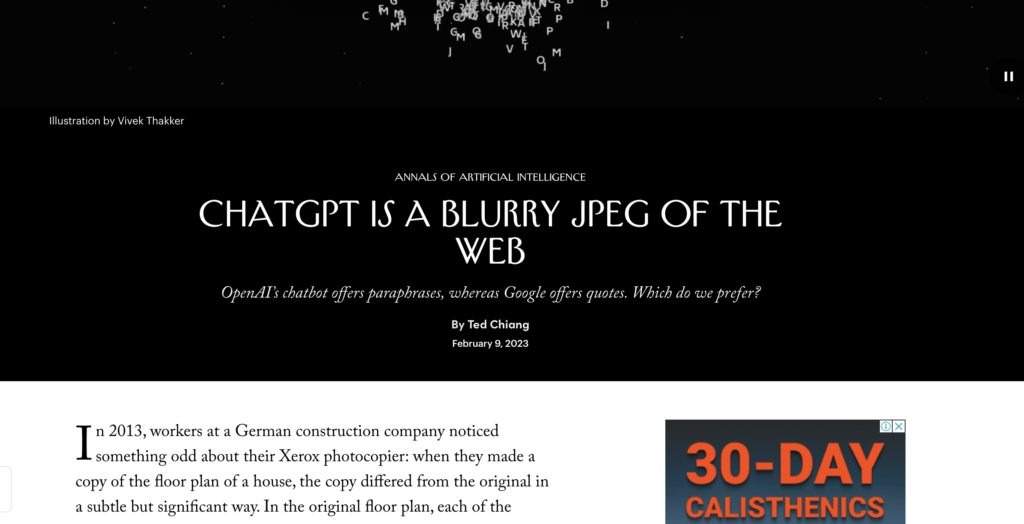
He analyzes the output of an LLM like ChatGPT using the metaphor of a Xerox photocopier with lossy compression. Here, he describes the output as a blurred copy of the original web content because it provides an approximate but not exact version of the original data.
He leaves readers with a thought-provoking caution against using AI like ChatGPT to create web content, since the proliferation of AI-generated content could lead to an increasingly ‘blurred’ and less reliable internet.
Data-Driven Feature Articles
Data-driven feature articles use statistics and data analysis to explore a topic or rising trend.
Publishing data-driven feature articles can offer many benefits. For one, it’s a great sign that you’re sharing an expert opinion and are an authority on the topic.
And it’s typically a great ‘link magnet’ for others in your niche or publications discussing something in your niche to link to.
You can even do something annually, like how Buffer publishes their annual State of Remote Work.
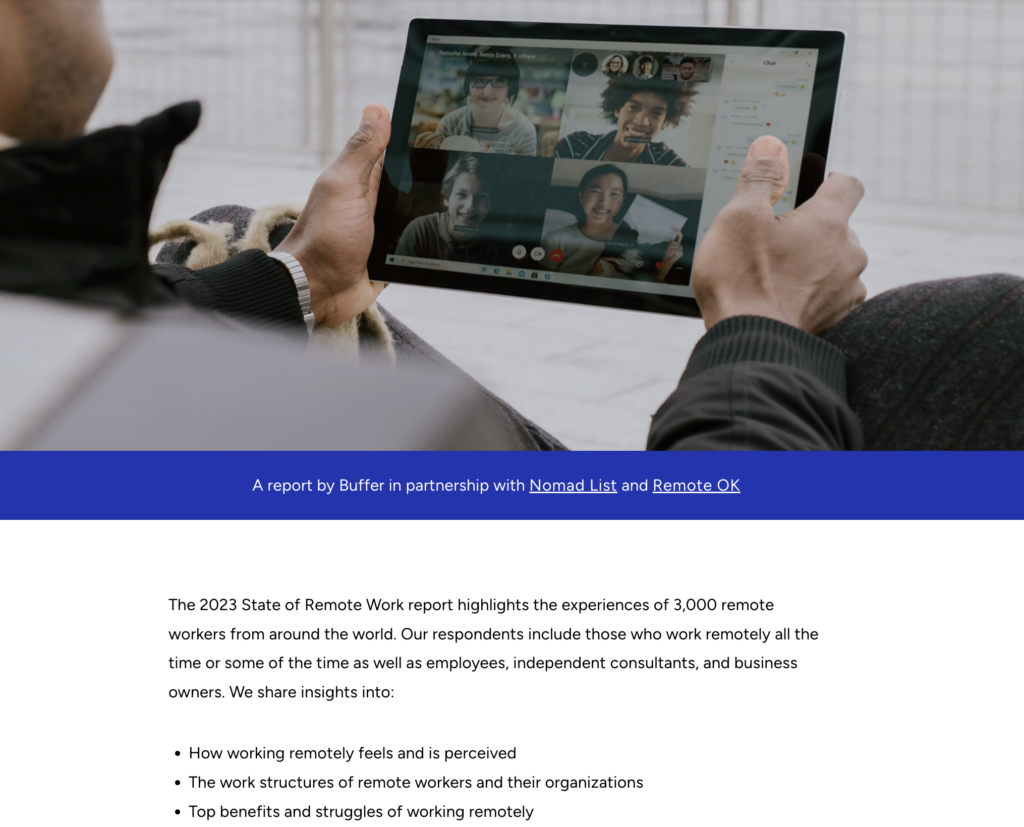
So, every year, Buffer compiles data from surveys of remote workers. It explores various topics of interest, such as challenges, experiences, preferences, etc., and backs up trends with data.
Granted – this isn’t the more personal feature article we’ve discussed thus far – but more of a corporate example. But it’s still an example of what you can do with feature stories!
How-To Feature Articles
This type of feature provides step-by-step instructions and tips, making it practical for readers looking to learn a new skill.
You provide complete, step-by-step articles that teach readers how to do something specific.
This article is very familiar to every blogger, so it requires the least introduction. But here’s a good example of a how-to article a travel blogger could write.
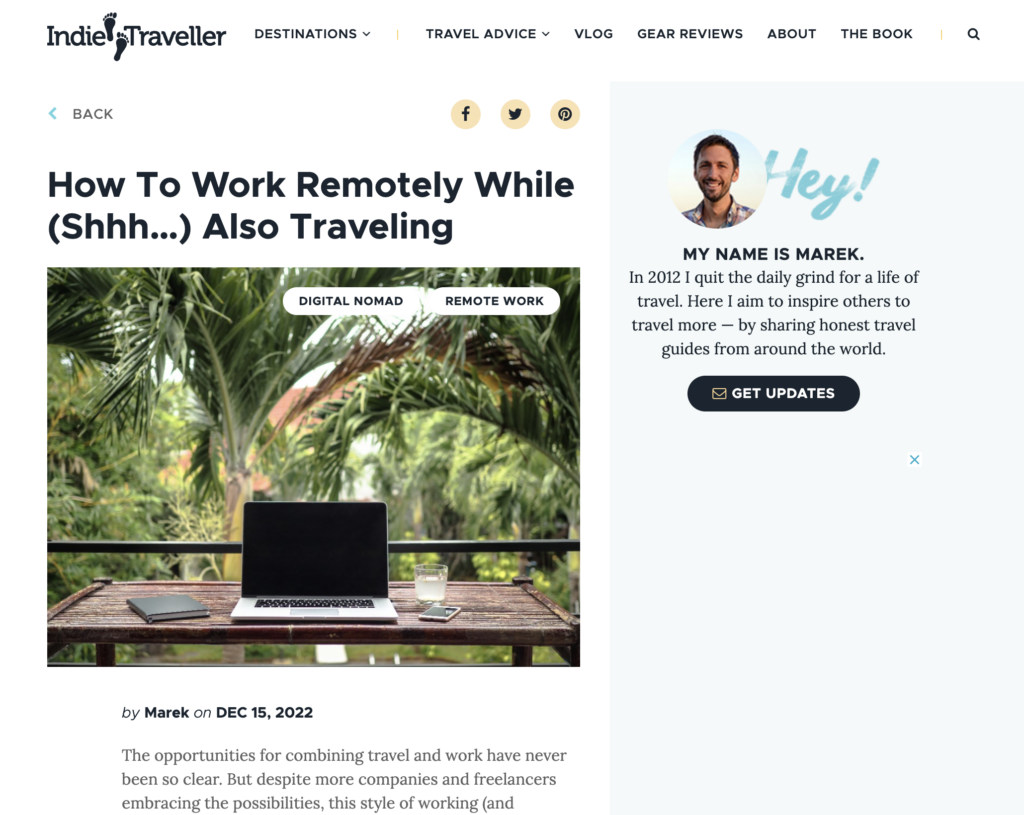
The article aims to share the author’s experiences as a remote worker since 2012. As a result, it provides informative and practical advice to the target audience.
Unlike some of the other examples, this type of feature article can also rank for competitive search terms, which can bring traffic to a business.
And just so we don’t miss anything – there are also:
- Trend Pieces (exploring emerging patterns in culture, society, technology, or some other niche topic)
- Investigative Features (deep diving into complex issues)
- Behind-the-Scenes Features (rare glimpses into inner workings)
- Historical Retrospectives (bridging past and present)
- Comparative Analyses (comparing different products, sports, ideas, etc.)
- Personal Essays (personal thoughts shared by the author)
- And Expert Interviews (sharing direct access to niche specialists)
How To Write a Feature Article in Conclusion
There you have it.
You now have the know-how for writing a great feature article your audience will love.
So, be sure to use the steps in this article. And if needed, feel free to adapt, iterate, and add more ideas to your process.
It doesn’t matter what niche, you’re in, feature articles add great context and humanity to your website. And an amazing feature article in your niche is ready and waiting for you to write it!


Great instructions